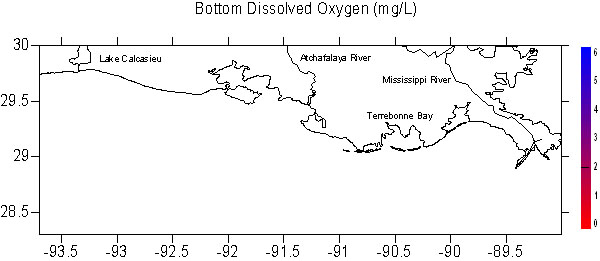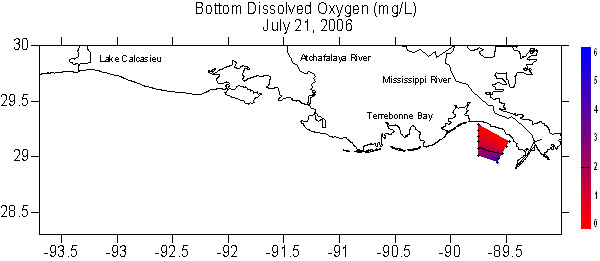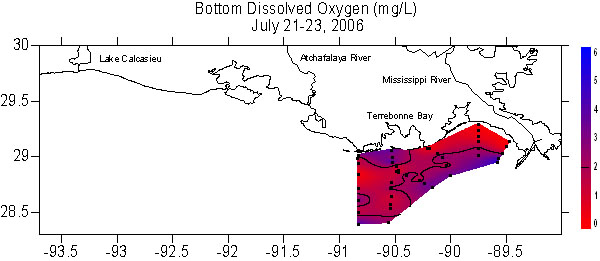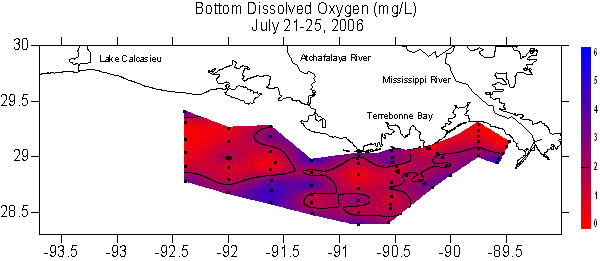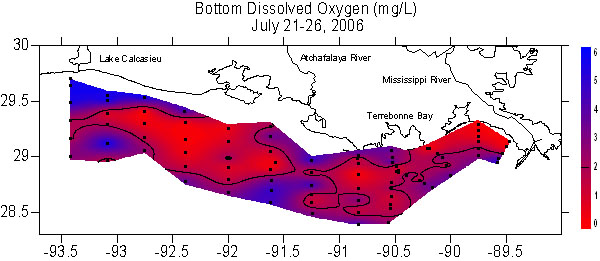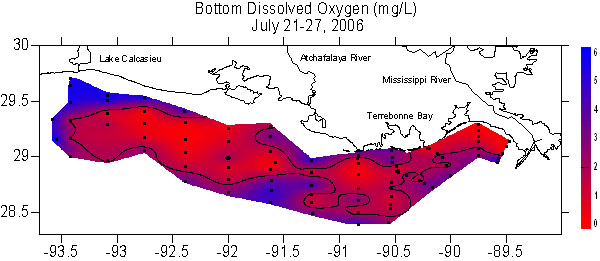[ 2006 | 2007 | 2008 | 2009 | 2010 | 2011 | 2012 | 2013 | 2014 | 2015 | 2016 | 2017 | 2018 | 2019 | 2020 | 2021 | 2022 | 2023 | 2024 | 2025 ]
2006 Shelfwide Cruise: July 20 - July 28
The Issue. The scientific work for the commonly name 'Dead Zone' is hypoxia or low oxygen. The second largest zone of hypoxia in the world's coastal waters is found in the Gulf of Mexico adjacent to the Mississippi River system. Important commercial and recreational fisheries are impacted as reduced oxygen levels force fish, shrimp and crabs from the area. Animals that cannot move away die. Fresh water and nutrients from the Mississippi lead to the annual formation of the hypoxic waters, and increasing nutrient loads beginning in the 1950s are responsible for the worsening oxygen conditions since then.
Routine Measurements
ESTIMATED SIZE OF BOTTOM-WATER HYPOXIA for 2006 is 17,280 square kilometers (or 6,662 square miles) about the size of the states of Rhode Island and Connecticut combined.
Projects
- Hydrographic surveys, mapping of low oxygen area and associated physical, chemical and biological parameters
- Methyl mercury characterization and processes
- Microphytobenthos
- Paleoindicators, benthic foraminiferans
- Oxygen isotopic signatures
Principal Investigators
- Nancy Rabalais, Louisiana Universities Marine Consortium
- R. E. Turner, Louisiana State University
- Chunyan Li, Louisiana State University
- Greg Stone, Louisiana State University
- Dave Senn, Harvard University School of Public Health
Additional Investigators
in absentia
- Dubravko Justić and Bryan Fry, Louisiana State University
Funding
National Oceanic and Atmospheric Administration, Center for Sponsored Coastal Ocean Research, NGOMEX Hypoxia Studies (Rabalais et al.), and NOAA, Oceans and Human Health Initiative (Senn et al.)


